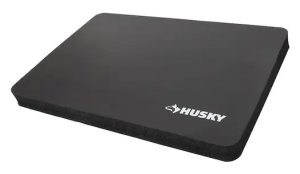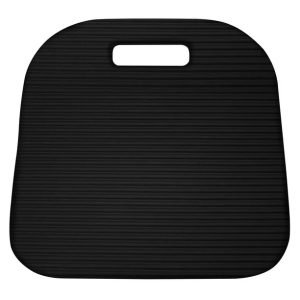Cheap Studio Monitor Isolators and Stretch Covers for the WIN
Remember my last post about the absolutely AWESOME but some would say ugly-glossy JBL 305P MKii speakers? Well here are three quick tweaks that will put you right up there with the experts in terms of… well, not really but they ARE cool cheap tweaks…
A Proper Home-Studio Setup is Usually Unrealistic
The recommendations for setting up studio monitors are quite simple. Put the speakers on isolation stands at eye/ear level, not backed up to a wall and about 36″-48″‘ away from your face, where your head and each speaker form an equilateral triangle.
Trouble is, most people don’t have the space for an ideal setup and walls are hard to move. But, it turns out isolating your speakers is quite easy to do.
In the most practical terms, all you need to do is separate your speakers from your desktop worksurface. That way, the speakers can’t transfer vibrational energy to the desktop, thereby altering the sound your hear when mixing / monitoring.
You can do that with custom speaker isolators and stands of various styles, at price points up to hundreds of dollars. Or you can get 80%-90% of the same results for under $15.
Silicon “Moon Gel” Speaker Isolators
My first thought when considering speaker isolation from my desktop worksurface was very simple silicon gel tabs – such as Moon Gels that drummers use. And turns out, they work GREAT.
I ordered the exact pack you see here (click the image to order) for $9 with free shipping, and ended up using 8 gel-tabs per speaker, with 2 tabs stacked together at each corner (and several left over for other projects.)
This created about a 1/8″ air gap between my speakers and the desktop surface for simple effective speaker isolation that completely eliminates any transfer of physical vibration from speaker to desktop – and they’re quite stable. In fact, I have my old bookshelf speakers sitting on top of the JBLs.
My next move is to cover my desktop surface with a neoprene yoga map to completely eliminate any slight hi-frequency reflections. But for this blog post, it’s enough to know that I personally use these gel-tabs for speaker isolation.
Cheap Foam Isolators
Granted, the gel-tab approach is kinda “stealth” in nature. So what if you just like the look-n-feel of speaker isolation pads, but don’t want to spend $30+ on two little foam squares? No problem, I gotcha covered there too!!!
Husky Kneeling Pad @ Home Depot $15

This is a terrific, dense closed-cell foam with smooth surfaces on both sides, which you can easily cut into 4 speaker isolators (again for most 4″ / 5″ 2-way studio monitors.)
However, at 1.5″ thick, it may not be as stable as you like if you’re stacking speakers. In that case.
Ozark Trail Foam Seat Cushion @ WalMart $7

Note: One side of the cushion is wavy and one side is smooth. I’m actually using the smooth side of mine for an awesome giant cushiony mouse pad!
Instant Speaker Covers for $10
Now we come to my single favorite studio monitor tweak, but it may only apply to the JBL 305P MkII speakers which have a very glossy front facia that many users really dislike. Personally, I don’t have a problem with the glossy fronts, but the reflections can be distracting.
Viola! Like magic, no more glossy fronts !!!
Now I realize the fabric may not be 100% acoustically transparent, but I’ve A/B’d the speakers side by side with and without the covers and personally I can hear no differences at all.
This DIY should also most 4″ / 5″ / 6″ studio monitors, but all I have to try it on is the JBL 305Ps.
Click the image to buy a pair now for $10 with free shipping!

